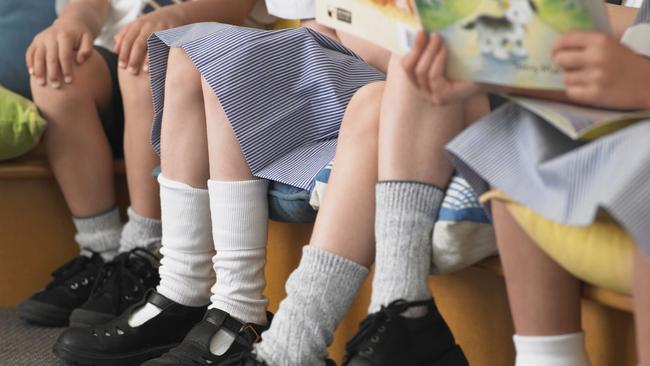Survey reveals most parents want a minimum age for students to transition gender identity in public schools
A MAJORITY of South Australian parents say there should be a minimum age for allowing public school students to change their gender identity.

SA News
Don't miss out on the headlines from SA News. Followed categories will be added to My News.
- Education policy details how public schools should accommodate transgender students
- SA Government to fund revamped Safe Schools program to tackle bullying among LGBTI students
- How SA laws hinder the fight for transgender acceptance
A MAJORITY of South Australian parents say there should be a minimum age for allowing students to change their gender identity in public schools.
The state Education Department’s transgender policy, revealed by The Advertiser in January, does not have an age restriction.
A survey by parent group the SA Association of State School Organisations found more than 60 per cent of parents and half of teachers supported a minimum.
Of those who favoured a restriction, about three-quarters said children should at least be in high school, with many favouring a minimum age of 16 or even 18.
The policy was the first time the department explicitly detailed how schools should accommodate transgender students.
It allows them to use their preferred names, wear their preferred uniform and use the toilets of their choice, and applies to students whose gender identity has been discussed with parents and confirmed by health professionals.
In his report on the survey, SAASSO director David Knuckey said: “Among the many comments received, the prevailing reasons for opposing aspects of the policy were that children are too young to make such decisions, the children won’t be safe from bullying and violence and that this is not the role of schools.”
More than 90 per cent of the 1300 respondents were parents, and half worked in schools.
The department’s executive director for early years and child development Ann-Marie Hayes said in the unprecedented event of a student wanting to transition their gender identity against their parents’ wishes, a range of professional advice would sought.
Ms Hayes said a principal would not be expected to make a final decision, which would likely be referred to a regional education director or an expert panel.
She stressed the policy was about social, not physical gender change, which she said for minors could only happen through the Family Court and with the support of both parents and psychiatrists.
Ms Hayes said most transgender cases were high school students, but reports involving much younger children interstate meant the department “didn’t want to be prescriptive about what age a family might approach the school and say my child is transitioning”.
“It’s very dependent on the individual and very dependent on the families picking it up (recognising their child’s gender traits),” she said.
“Other families know because it’s the request of the child.”
Two-thirds of survey respondents said parents should have to approve a child’s gender identity change at school, 62 per cent said a doctor and 32 per cent said the principal. 40 per cent said “other”.



